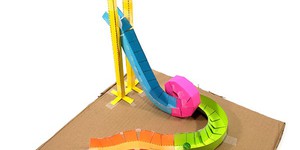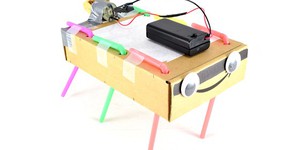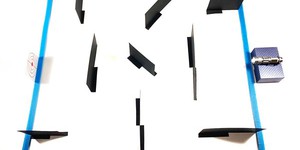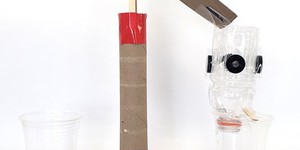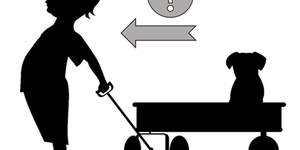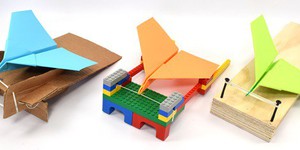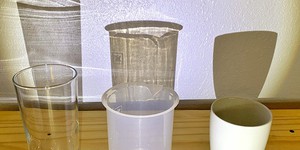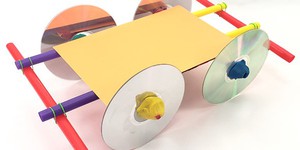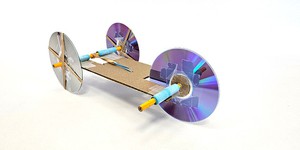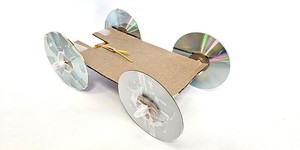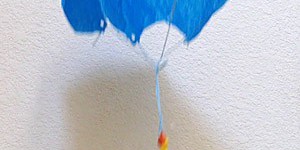Physics Lesson Plans (60 results)
Physics is the study of matter — what is it made of? How does it behave? What laws or equations describe it?
From subatomic particles, to the Big Bang, modern physicists study matter at a tremendous range of scales. There's a whole lot of interesting physics at the human scale, too.
|
Select a resource
Sort by
|
Lesson Plan
Grade: 6th-8th
24 reviews
What goes up, must come down in this thrill-seeking lesson plan! How much energy does a roller coaster car need to make it through a loop? In this lesson your students will learn about kinetic and potential energy as they build their own roller coasters from simple classroom materials.
Read more
NGSS Performance Expectations:
Featured
Lesson Plan
Grade: 6th-8th
7 reviews
Junkbots are easy-to-build robots that you can make using a simple circuit and some recyclable materials. In this lesson, your students will learn about engineering design as they compete to build the fastest robot. No previous robotics experience is required!
Read more
NGSS Performance Expectations:
Lesson Plan
Grade: 6th-8th
14 reviews
When light interacts with an object, it can be absorbed, transmitted, or reflected. This lesson focuses on materials that reflect light. Specifically, students will use mirrors and flashlights to investigate how light is reflected from a surface. By doing that, they will discover that when a light ray hits a reflective surface, its angle of incidence is equal to the angle of reflection, which is stated by the law of reflection. Students will then use their gained knowledge in a mirror maze…
Read more
NGSS Performance Expectations:
New
Lesson Plan
Grade: 6th-12th
Create a two-part system for filtering greywater. Teams will focus on communication and systems engineering as they build separate components to filter solid and liquid waste and then combine them into one device.
Learning Objectives
Students will:
Consider the potential effects of drought and how greywater could be part of the solution.
Design a system for filtering out solid waste or liquid waste.
Consider effective communication strategies with their team.
Collaborate on their design…
Read more
Lesson Plan
Grade: 6th-8th
5 reviews
In this lesson plan, your students will build their own recycling sorting machines that use various methods, like magnets or puffs of air, to separate shreds of paper from paper clips. This lesson is inspired by the real-world engineering challenge of separating various materials, like paper, plastic, and metals, that get combined in single-stream recycling programs.
Read more
NGSS Performance Expectations:
Lesson Plan
Grade: Kindergarten
10 reviews
Your kindergarten students are used to moving objects. They throw balls, play with toy cars, and sweep the floor, but how much do they think about these actions? In this fun, hands-on lesson, you will use a game (rolling balls) to explore how pushing and pulling affects an object's motion.
This lesson can be expanded with a second lesson exploring how objects can push each other, and how weight influences motion.
Read more
NGSS Performance Expectations:
Lesson Plan
Grade: 6th-8th
7 reviews
Aircraft carriers are much shorter than a typical airport runway. How do airplanes manage to gain enough speed for takeoff over such a short distance? A catapult gives them an extra boost! In this lesson, your students will practice engineering design as they build their own paper airplane launchers, while learning about kinetic and potential energy.
Read more
NGSS Performance Expectations:
Lesson Plan
Grade: 1st
12 reviews
In this lesson, students explore firsthand what transparent, translucent, and opaque mean, and how they are related to light. They will place a variety of materials in front of an illuminated object and predict if and how well they will be able to see the object through the material sheet. In doing that, students will realize that different materials allow different amounts of light to pass through.
Remote learning:
This lesson plan can be conducted remotely. The Engage section of the…
Read more
NGSS Performance Expectations:
Lesson Plan
Grade: 6th-8th
4 reviews
Combine Newton's third law of motion with engineering design in one fun lesson! Your students will learn about equal and opposite reaction forces as they design and build a bumper to protect a toy car during a crash.
Read more
NGSS Performance Expectations:
Lesson Plan
Grade: 6th-8th
11 reviews
In this fun engineering lesson plan, your students will build rubber band-powered cars using readily available craft supplies. The challenge is to build a car that goes as far as possible while making careful use of materials.
Elementary school and
high school versions of this lesson plan are also available. You can enter your students' designs in the 2024 Science Buddies Engineering Challenge for a chance to win a cash prize for your school.
Read more
NGSS Performance Expectations:
Lesson Plan
Grade: 3rd-5th
10 reviews
In this fun engineering lesson plan, your students will build rubber band-powered cars using readily available craft supplies. The challenge is to build a car that goes as far as possible while making careful use of materials.
Middle school and
high school
versions of this lesson plan are also available. You can enter your students' designs in the 2024 Science Buddies Engineering Challenge for a chance to win a cash prize for your school.
Note for K-2 teachers: you can do this…
Read more
NGSS Performance Expectations:
Lesson Plan
Grade: 3rd
5 reviews
Forces, which we might instinctively describe as pushes and pulls, are acting on us at all times, but we cannot always see them. This hands-on lesson offers a fun opportunity to explore "invisible" forces like gravity and air resistance. Students will build parachutes and investigate how they allow skydivers to safely land.
Read more
NGSS Performance Expectations:
|
Explore Our Science Videos
Bottle Rocket Parachutes
Gingerbread House STEM Challenge
Make Your Own Lava Lamp


